Minimally invasive, patient specific, beat-by-beat estimation of left ventricular time varying elastance
- PMID: 28407773
- PMCID: PMC5390429
- DOI: 10.1186/s12938-017-0338-7
Minimally invasive, patient specific, beat-by-beat estimation of left ventricular time varying elastance
Abstract
Background: The aim of this paper was to establish a minimally invasive method for deriving the left ventricular time varying elastance (TVE) curve beat-by-beat, the monitoring of which's inter-beat evolution could add significant new data and insight to improve diagnosis and treatment. The method developed uses the clinically available inputs of aortic pressure, heart rate and baseline end-systolic volume (via echocardiography) to determine the outputs of left ventricular pressure, volume and dead space volume, and thus the TVE curve. This approach avoids directly assuming the shape of the TVE curve, allowing more effective capture of intra- and inter-patient variability.
Results: The resulting TVE curve was experimentally validated against the TVE curve as derived from experimentally measured left ventricular pressure and volume in animal models, a data set encompassing 46,318 heartbeats across 5 Piétrain pigs. This simulated TVE curve was able to effectively approximate the measured TVE curve, with an overall median absolute error of 11.4% and overall median signed error of -2.5%.
Conclusions: The use of clinically available inputs means there is potential for real-time implementation of the method at the patient bedside. Thus the method could be used to provide additional, patient specific information on intra- and inter-beat variation in heart function.
Keywords: Cardiovascular system; Minimally invasive; Time varying elastance.
Figures
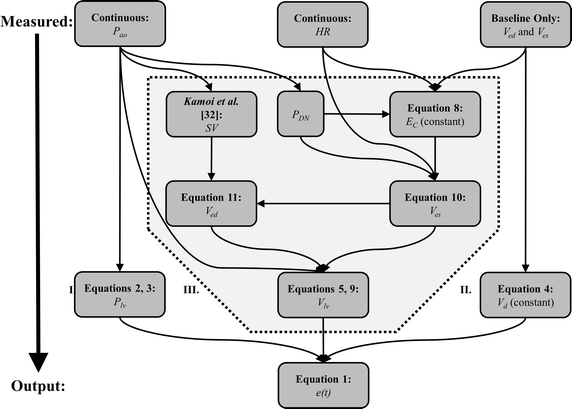

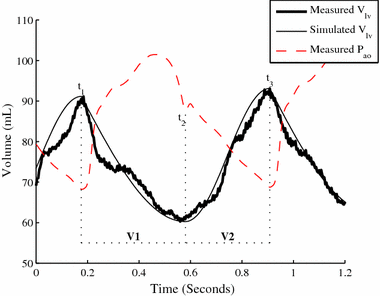

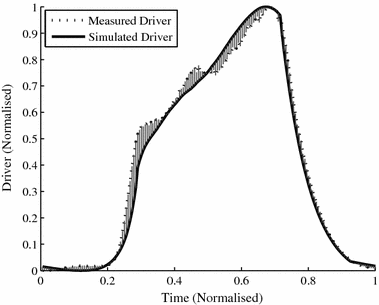
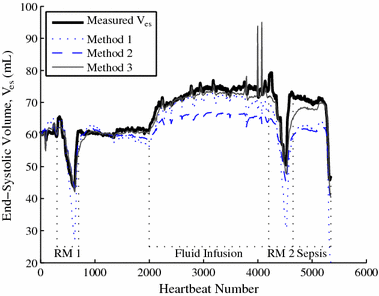
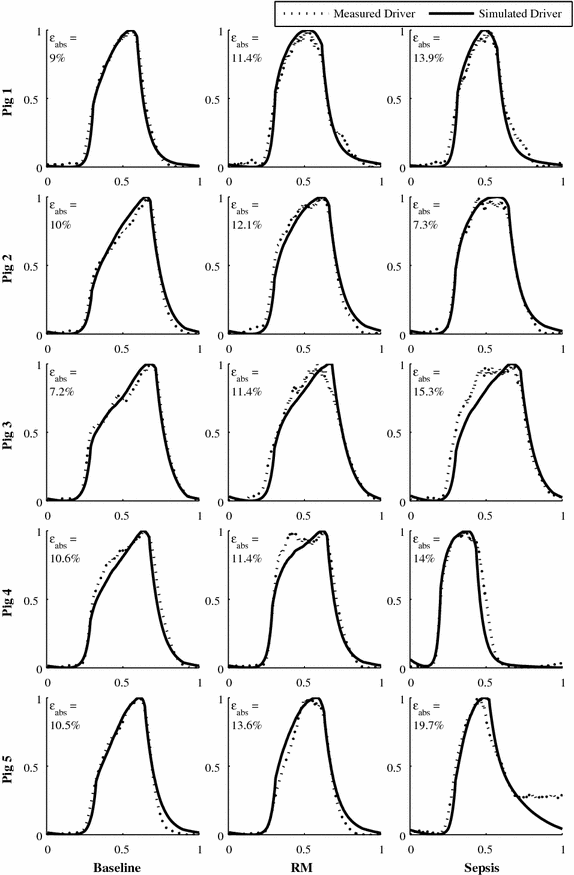
Similar articles
-
Beat-by-Beat Estimation of the Left Ventricular Pressure-Volume Loop Under Clinical Conditions.Ann Biomed Eng. 2018 Jan;46(1):171-185. doi: 10.1007/s10439-017-1947-9. Epub 2017 Oct 25. Ann Biomed Eng. 2018. PMID: 29071529
-
Minimally invasive estimation of ventricular dead space volume through use of Frank-Starling curves.PLoS One. 2017 Apr 27;12(4):e0176302. doi: 10.1371/journal.pone.0176302. eCollection 2017. PLoS One. 2017. PMID: 28448528 Free PMC article.
-
Single-beat estimation of end-systolic elastance using bilinearly approximated time-varying elastance curve.Circulation. 2000 Oct 17;102(16):1983-9. doi: 10.1161/01.cir.102.16.1983. Circulation. 2000. PMID: 11034949
-
Left ventricular function: time-varying elastance and left ventricular aortic coupling.Crit Care. 2016 Sep 10;20(1):270. doi: 10.1186/s13054-016-1439-6. Crit Care. 2016. PMID: 27613430 Free PMC article. Review.
-
Beat to beat variability in cardiovascular variables: noise or music?J Am Coll Cardiol. 1989 Nov 1;14(5):1139-48. doi: 10.1016/0735-1097(89)90408-7. J Am Coll Cardiol. 1989. PMID: 2681319 Review.
Cited by
-
Model based care in the ICU: A review of potential combined cardio-pulmonary models.PLoS One. 2024 Oct 24;19(10):e0306925. doi: 10.1371/journal.pone.0306925. eCollection 2024. PLoS One. 2024. PMID: 39446758 Free PMC article.
-
Blood pressure waveform contour analysis for assessing peripheral resistance changes in sepsis.Biomed Eng Online. 2018 Nov 20;17(1):171. doi: 10.1186/s12938-018-0603-4. Biomed Eng Online. 2018. PMID: 30458800 Free PMC article.
-
A guide for assessment of myocardial stiffness in health and disease.Nat Cardiovasc Res. 2022 Jan;1(1):8-22. doi: 10.1038/s44161-021-00007-3. Epub 2022 Jan 12. Nat Cardiovasc Res. 2022. PMID: 39196108 Review.
-
Shortening the thick filament by partial deletion of titin's C-zone alters cardiac function by reducing the operating sarcomere length range.J Mol Cell Cardiol. 2022 Apr;165:103-114. doi: 10.1016/j.yjmcc.2022.01.002. Epub 2022 Jan 11. J Mol Cell Cardiol. 2022. PMID: 35031281 Free PMC article.
References
-
- Mozaffarian D, Benjamin EJ, Go AS, Arnett DK, Blaha MJ, Cushman M, Das SR, de Ferranti S, Després J-P, Fullerton HJ. Heart Disease and Stroke Statistics—2016 update: a report from the American Heart Association. Circulation. 2015 - PubMed
MeSH terms
LinkOut - more resources
Full Text Sources
Other Literature Sources

